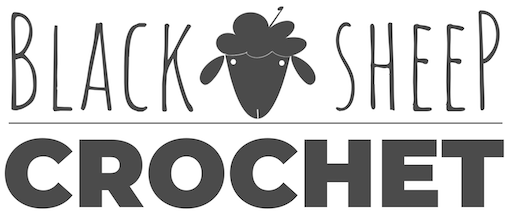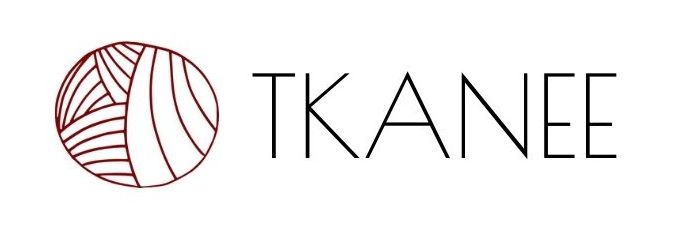What will you need
All the hexagons of the Frozen Christmas series are compatible and can be made into many things. You can alter the look, size and feel of your project by changing the hook and yarn. You can make shawls, scarfs, blankets, bed covers, rugs, table decorations. It’s really all up to you.
For this hexagon you’ll need the following:
a size 4 crochet hook
50g of a DK wight yarn ( I’m using the Merino from Vlnap – it’s 50g and 105m)
stitch markers to make sure you won’t get lost in your project
Terminology
The crochet technique used in The Frozen Christmas hexagons is called “overlay crochet” and it means that the pattern work is composed by at least two layers of stitches. One layer creates the background and the other creates the overlay motifs. The stitches often use front or back loops only to help create this embossed look.
This patterns are written in ‘Petranese’ (named after Petra from Black sheep crochet) with my additions and it uses US crochet terminology. I added some stitch types to it to accommodate my designs.
General rules for reading Petranese
The Petranese is composed of simple crochet terms we all know and there are special stitch abbreviations that enable us to provide specific directions and detailed description of the way the stitch is to be crocheted.
Stitch definition abbreviations consist of 2 basic parts divided by a “_”
Stitch type _ placement of the stitch
FIRST PART - STITCH TYPE
In the first par we learn what kind of stitch to use and if it is a front post stitch or not. Sometimes there are also some other specifications regarding it’s placement towards other stitches there.
Front posts (fp)
If a stitch is a front post st, it is specified at the beginning and followed by the kind of stitch that will be made around a stitch from previous round (i.e. fptr – front post treble)
Stitches from the left
‘Stitches from the left’ (sfl) are used to create a smooth, round shape when mirroring a design that was worked from the usual side in usual direction (right-handed from right to left and left-handed from left to right). To make a stitch from the left, insert the stitch from left under the st you are making the front post around (the opposite side than usually). Then you put the thread on the right side of the hook and crochet the st from there.
This kind of stitch is specified in the stitch abreviation by addind a -L behind the stitch type (i.e. fptr-L – front post treble from left)
Leg 1/ Leg 2 …
Stitches around a 2TOG st (two sts crocheted together) can be made either inserting the hook behind both legs of the stitch together (around the entire stitch) or around just a part of it. That’s why there would be a number specifying the leg you work around. The legs of a TOG stitch are counted from left to right even when you are left handed. his kind of stitch is specified in the stitch abreviation by addind a number of the leg behind the stitch type (i.e. fptr-L/2_+2-2 – a front post treble around the leg 2 of the st 2 ahead and 2 below the next st).
Over or Under
Sometimes when working a longer stitch we have to cross another stitch made before. We can cross it over or under.
Crossing over is made the usual way, but when crossing under we have to insert the hook under the stitch it’s crossing before making the stitch. his kind of stitch is specified in the stitch abreviation by addind a -U behind the stitch type (i.e. fptr-2/U_+2-2 – front post treble around the leg 2 od the stitch 2 ahead and 2 below the next stitch under the st it’s crossing)
Stitch type abbreviation in a nutshell
| – | Direction of hook |
| Choosing a leg of a 2TOG st |
| When crossing |
Type of st | L / empty | 1/2/3… or empty | -U / empty |
SECONF PART - DIRECTION OF THE STITCH
In the directions there is first a horizontal placement and the a vertical placement of the basis of the stitch. If it is not specified at all, the stitch is worked into the free top loops of the next stitch from previous round as usual (if it were to be specified, it would be 0-1)
The first numeral gives us the distance of the stitch from the next stitch. “+” means ‘count forward’ ans “-” means ‘count backwards’
0 means the next stitch, +3 means the third stitch after the next stitch – counting in the direction of the work, on the other hand -3 means the third stitch behind the next stitch – counting backwards.
The second numeral gives us the round in which we anchor the stitch (the depth of it), starting from the current round
0 means the current round and -1 is the one below it (the one we would usually use), -2 is 2 rounds below the current one, -3 is 3 rounds below and so on ….
Front, back and 3rd loops
When a stitch is not a front post it can be worked in many ways – into the front loop, back loop, 3rd loop or both top loops of the stitch. Each of these possibilities gives us a different result.
If the precise loops are not specified in the stitch abbreviation it means we have to use both loops. The specifications can be found behind the stitch abbreviation:
tr_+2-2 means treble into the (both) loops of the stitch 2 ahead and 2 below the next stitch
tr_+2-2 in FLO means treble into the front loops only of the stitch 2 ahead and 2 below the next stitch
When we need a front loop to anchor a stitch from a future round we obtain it by making a stitch into the back loop only (“in BLO”), leaving a front loop free for future use.
Directions of the stitch in a nutshell
+ / – | Distance from the next st | – | Specification of a round |
| What loops to use |
0 / 1 / 2 / 3 … | 0 / 1 / 2 / 3 … | in FLO / in BLO / in 3rd loop / empty |
PETRANESE ALPHABET
Whenever there is a list of special stitches it might be difficult to navigate it and fond what we are looking for, that is why the Petranese alphabet has been established. It gives us the order to list stitches. They are listed according to length of the basic stitch and within this criteria others follow.
Order of criteria
1. Length of the stitch (simple stitches before front posts)
2. Distance of the stitches within a round – the first numeral – (“+” before “-”)
3. Depth of the stitch – specification a round (the closer ones are first)
4. Stitches from left are after the stitches from right side.
5. Number of leg, when working around a 2TOG stitch – 1 before 2, 2 before 3 and so on…
The 2TOG stitches are listed after the non-joined ones in alphabetical order, 3TOG’s after 2TPG’s.
And aftere there all the other special stitches – clusters, popcorns, puffs…
ANOTHER IMPORTANT PATTERN NOTES
Skipping stitches
Whenever we make a special stitch to another place then the next stitch, we leave the next stitch unworked. The exceptions to this rule are the “padding stitches” dcbb ( double crochet behind and below) and hdcbb-x (half double crochet behind and below through the next stitch). In case of dcbb, the next st is skipped in front of it and in case of hdcbb-x, it’s not left out at all.
2tog stitches
2tog stitches have two “legs”. The type and direction of each of the legs is precisely specified in the stitch abbreviation and we crochet them the following way:
First we crochet the entire first leg until the moment before the last pull through and then we make the other leg again until the moment before the last pull through (in case of two trebles together, we would now have 3 loops on the hook – one from the previous stitch and one for each of the trebles). Now we pull through all of the remaining loops to finish the stitch.
Corners
There are two alternating basic corner options:
a) sc, ch1, sc into the same corner stitch from previous round and
b) sc into the ch1 space from previous round. When the alterations of the corners are regular this is the stitch the (sc, ch1, sc) goes into.
Sometimes the corners are made by different stitches (padding sts, front posts, 2tog’s…). It is always either one st or three sts and so there is always one precise corner spot. I recommend to mark this stitch with a stitch marker.
Repetitions
Every pattern round has 6 repetitions (starting with round 3) and at the beginning of the sequence it is stated which corner variation is to be used.
In the last repetition you have to replace the last stitch with a slip stitch
a) into the corner sc (or other stich when a different option of the scorner that uses only one stitch is used) or
b) the first sc (or any other first stitch in case of a corner option with three stitches into the same st) – it is the very first st we make after the ch1 from previous round
The slip stitch is followed by a ch1 that starts a new round and is not included in the stitch count. In case the last stitch of the round is a special stitch, is is replaced by a “special slip stitch”
Special slip stitches
This stitch is used mostly at the end of a last row when it replaces a special stitch and connects the beginning of the round with its end.
We make it the following way: First we have to move the thread in front of the work, then we insert the hook under the top loops of the stitch from behind, yo as usually for the given special stitch, crochet the stitch as usual until the moment before the final pull through. In case of a treble we would usually have two loops on the hook now (one from the previous stitch and one from this st) but here we will have 4 (1 from previous st, 2 are the top loops of the st we inserted the hook into and last is from the treble). We finish the special slip stitch by pulling the yarn through all of the remaining loops.

Petranese
My patterns are written in the Petranese system that has been invented by Petra from Black sheep crochet.
